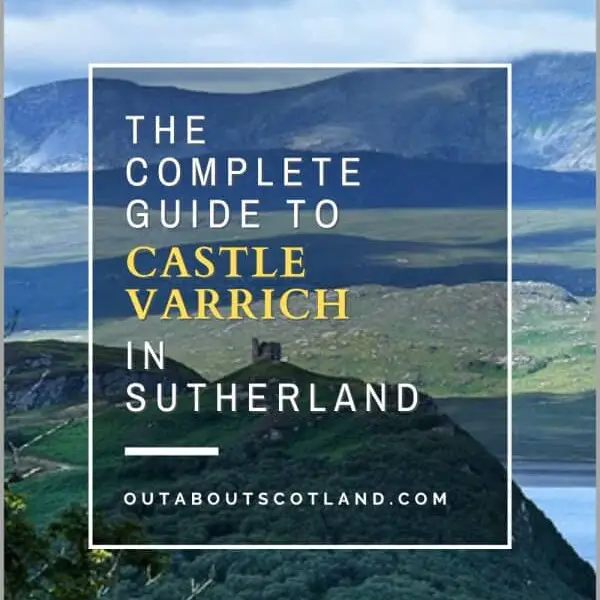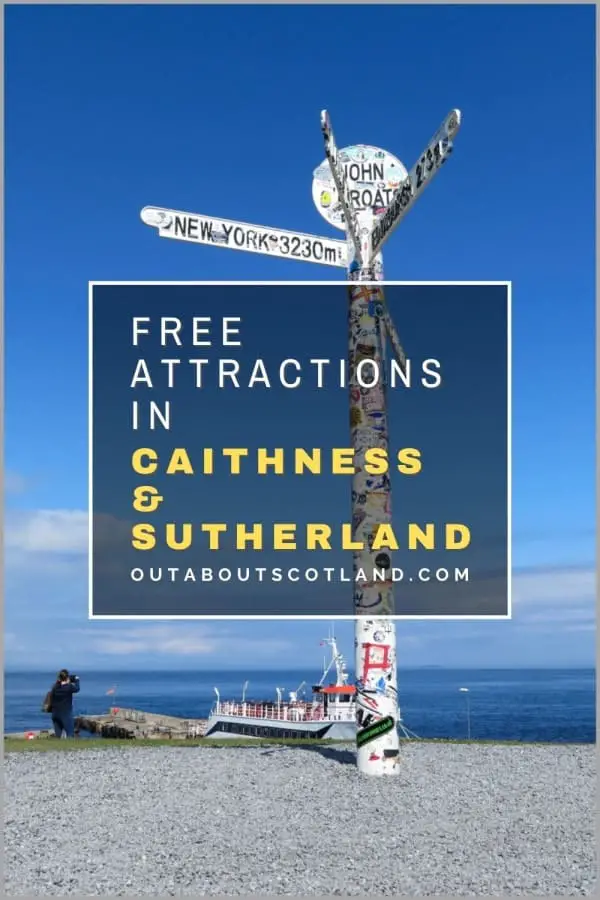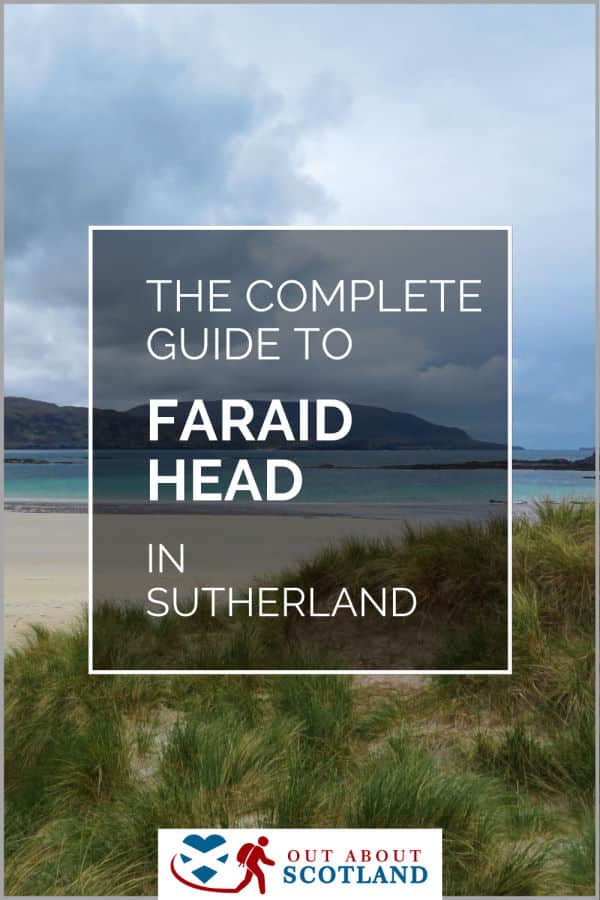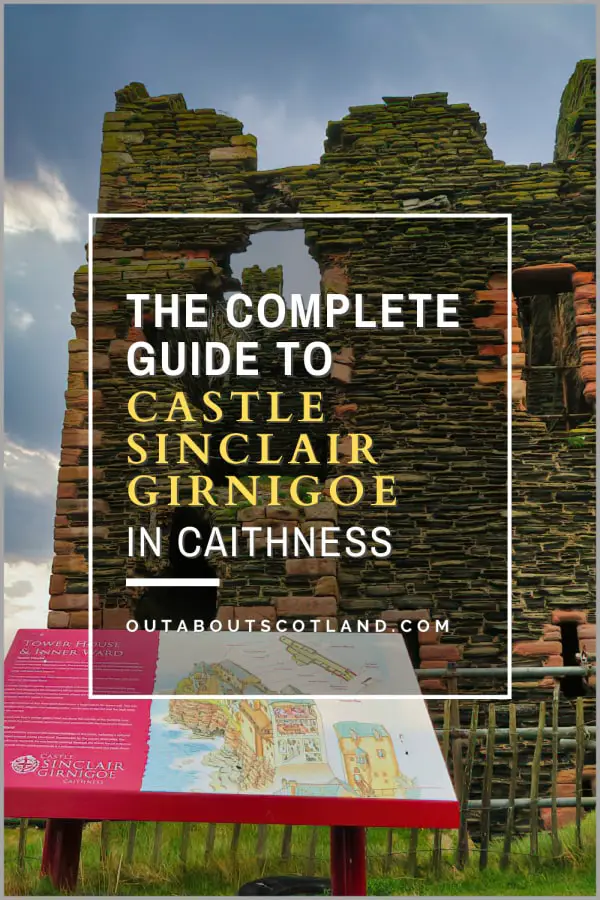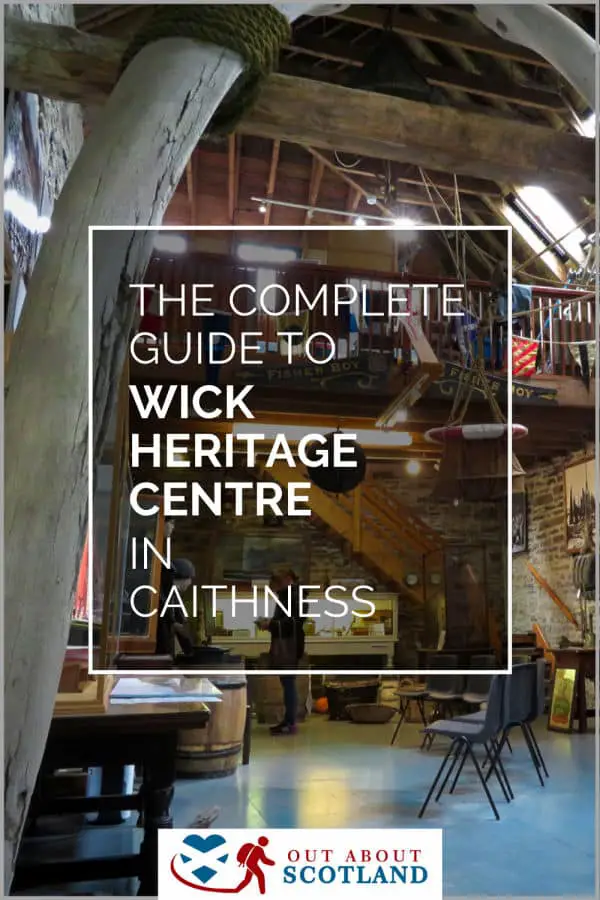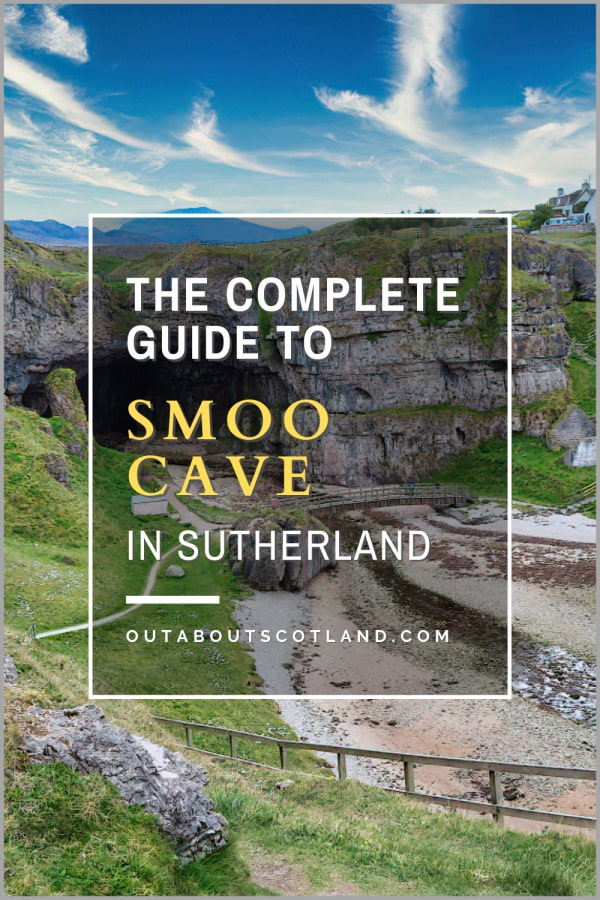Castle Varrich sits perched on top of an exposed promontory on the Kyle of Tongue in Sutherland, where visitors will find a small fortified tower that offers superb views of Ben Loyal from its raised viewing platform. The castle is easily accessed from a well-managed footpath that runs from the village of Tongue through woodlands and fields.
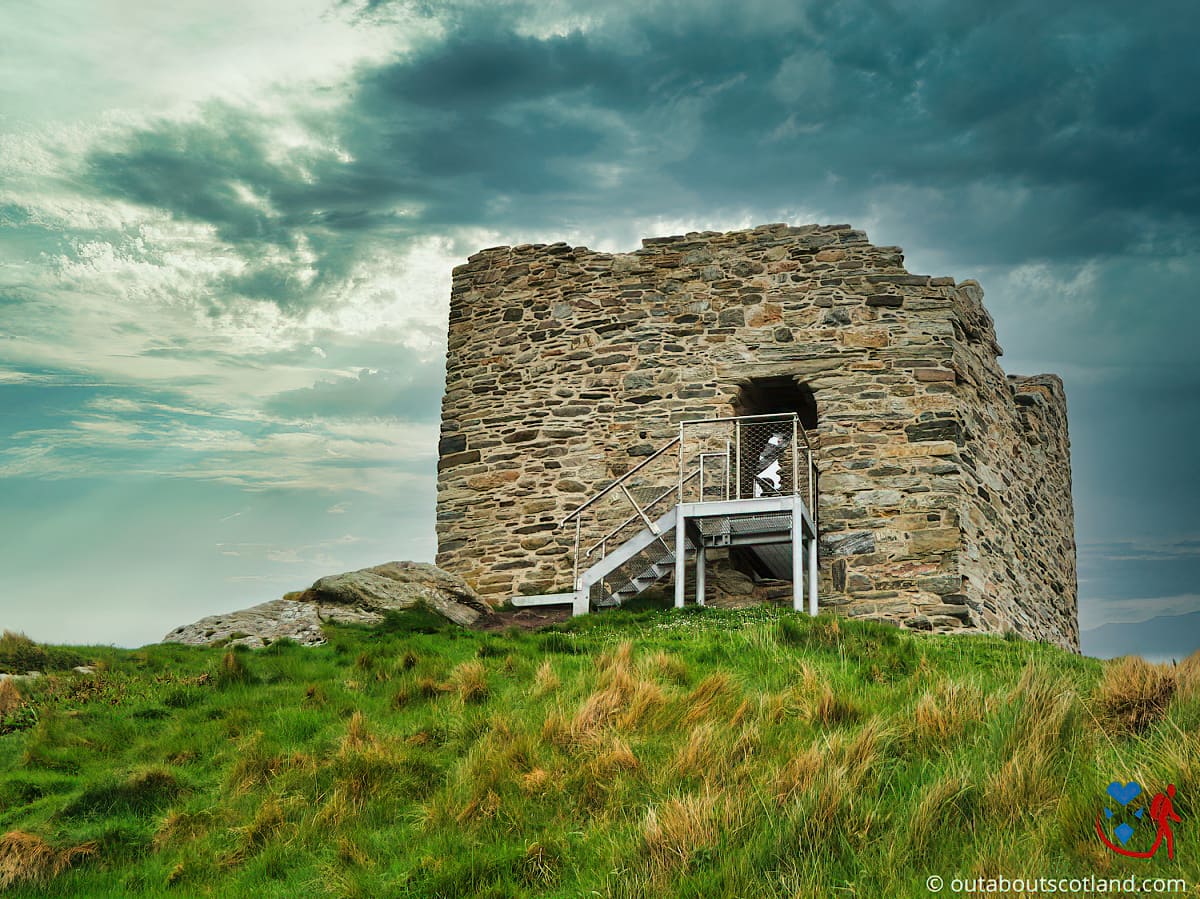
| Address: | Tongue, Lairg, IV27 4XE |
| Opening Hours: | 24/7 |
| Admission Price: | Free |
| Parking: | None at the castle. Free car park in Tongue. |
| Contact: | N/A |
| Facilities: | None at the castle. Restaurant and shop in Tongue. |
| Photos: | Virtual Tour YouTube Video |
Overview
Castle Varrich, perched high above the village of Tongue in the Scottish Highlands, is a historic site shrouded in mystery and intrigue. While its precise origins are unknown, it’s believed that the castle might date back to Viking times, or even earlier.
The castle’s ruins, though modest, are evocative of a time when Clan Mackay, to whom it’s traditionally linked, held sway over this rugged and remote landscape. The ruins of Castle Varrich sit strategically atop a rocky outcrop that provides a commanding view of the Kyle of Tongue and the vast, peat-rich blanket bogs of the surrounding countryside.
In recent years, the castle has seen conservation efforts to preserve what remains of it and to make it a safe site for tourists, primarily with the installation of a platform that allows visitors to climb to the top of the tower where they can enjoy mezmerizing views of the estuary and surrounding mountains.
Reaching Castle Varrich involves a short walk from Tongue that passes through a landscape of rivers, hills, and pastures, which shouldn’t take more than two hours to complete there and back, including photo stops and time spent soaking up the views of the magnificent Kyle of Tongue from the viewing platform.
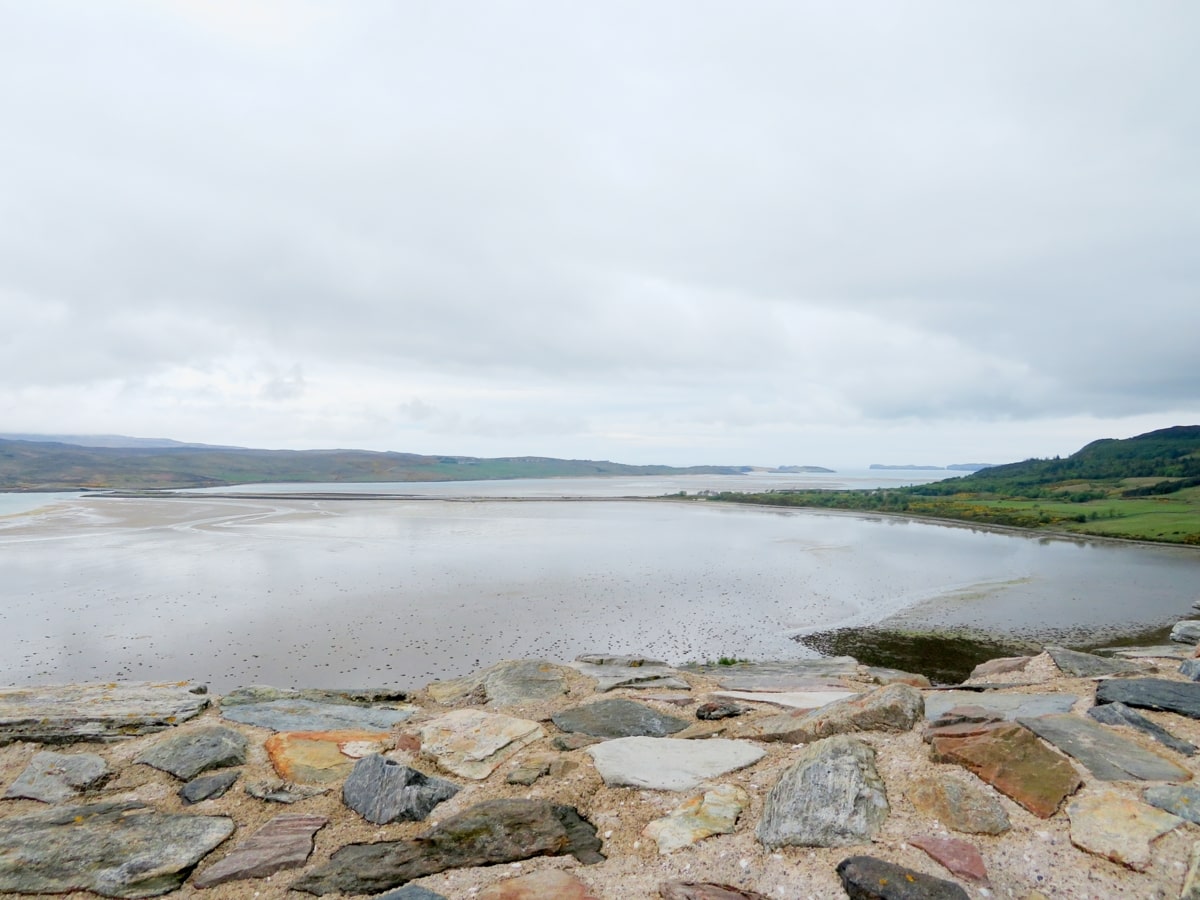
The Highlights
1: Castle Varrich is an easy walk from the village of Tongue, and the path is in good condition. Much of it is gravel, with the occasional stretch of rough grass. That being said, the route is not suitable for wheelchairs or pushchairs.
2: Admittedly, this isn’t the biggest attraction in Scotland, but the scenery from the viewing platform is stunning. You’ll find another good view of the Kyle of Tongue from the causeway that you can see from the top of the tower.
Visiting Tips
1: There are a couple of cafés in Tongue if you want a coffee pre- or post-walk, and there are B&Bs in the village if you’d like to stay overnight. The Ben Loyal Hotel is the best option, in my opinion.
2: Combine a visit to Castle Varrich with the beautiful Talmine Bay which is situated on the opposite side of the Kyle of Tongue.
3: Take binoculars to birdwatch from Castle Varrich’s viewing platform as there’s a good chance you’ll see eagles soaring overhead. You’ll find a selection of optics here: Birdwatching Binoculars.
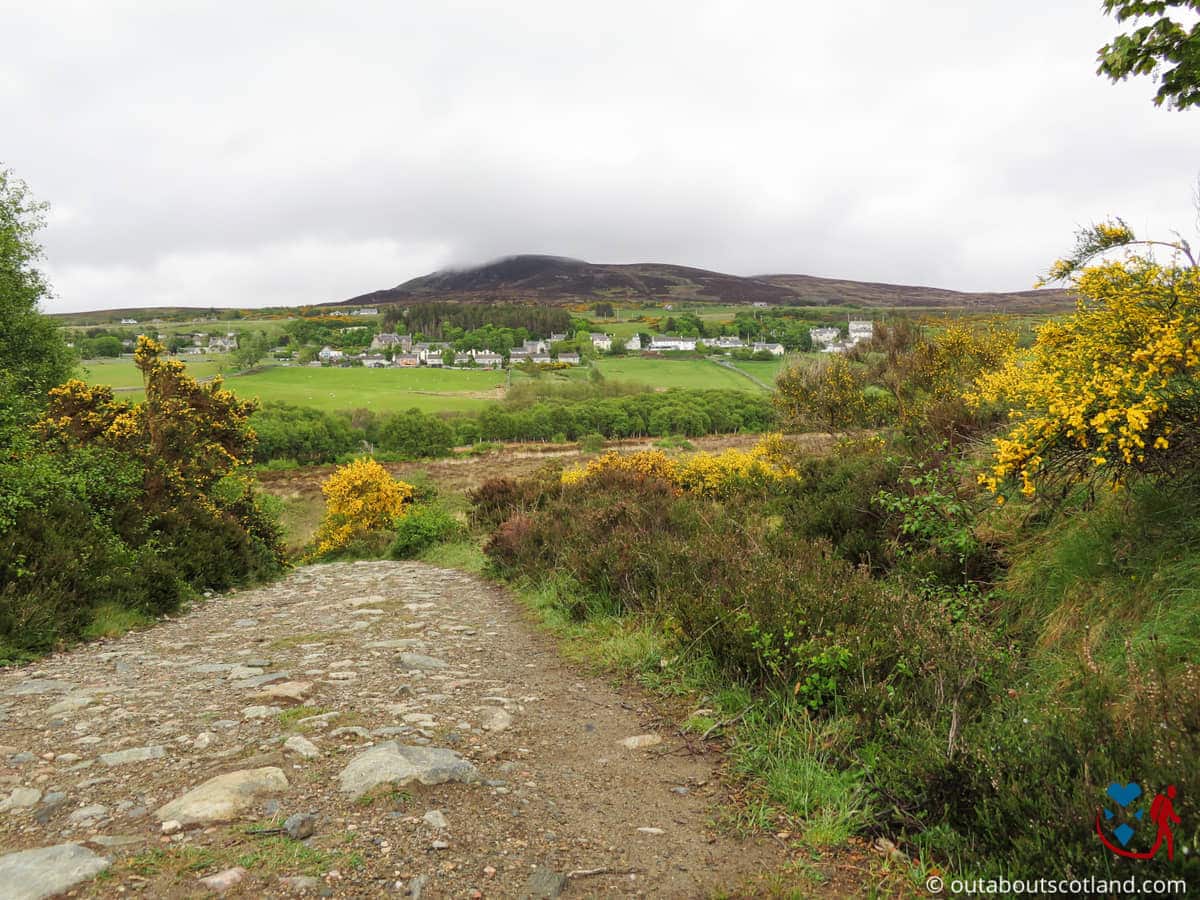
Tourist Information
This is a nice and easy walk that won’t take more than a couple of hours to complete. From the Ben Loyal Hotel, walk up the road a hundred yards to a signpost pointing to a footpath leading to Castle Varrich. The path is firm underfoot so you could easily manage it in trainers, and as it doesn’t deviate you just need to follow it till you reach the fort.
Along the way, you’ll cross an attractive river set amongst woodland, while the rest of the trail follows a shallow incline through grassland to the castle. It’s not exactly the biggest fortification in the world (in fact, it’s one of the smallest in Scotland), but it’s in a remarkably well-preserved condition.
The sandstone walls are around 5 feet thick and would have supported two floors when the castle was inhabited. According to the information panels, the ground floor was probably used as a stable while the upper floor was used as accommodation, but as there’s no roof it’s difficult to imagine how it would have looked in its prime.
Thankfully, Historic Environment Scotland has renovated much of the structure and they’ve also installed a steel spiral staircase with a viewing platform on the top, which makes a good spot to watch the local wildlife. Keep an eye open for oystercatchers and herons in the water and eagles and owls in the surrounding heathland, and if you have binoculars with you (link to my recommended optics), you might even catch a glimpse of whales out to sea.
Sea life is prevalent in the area, but for the best chance of seeing whales, I suggest taking a short drive further up the coast to Talmine Bay (which you can read about here: Talmine Bay). Alternatively, drive to the A838 bridge (which you’ll need to cross anyway if you’re going to Talmine) and stop at the car park viewpoint.
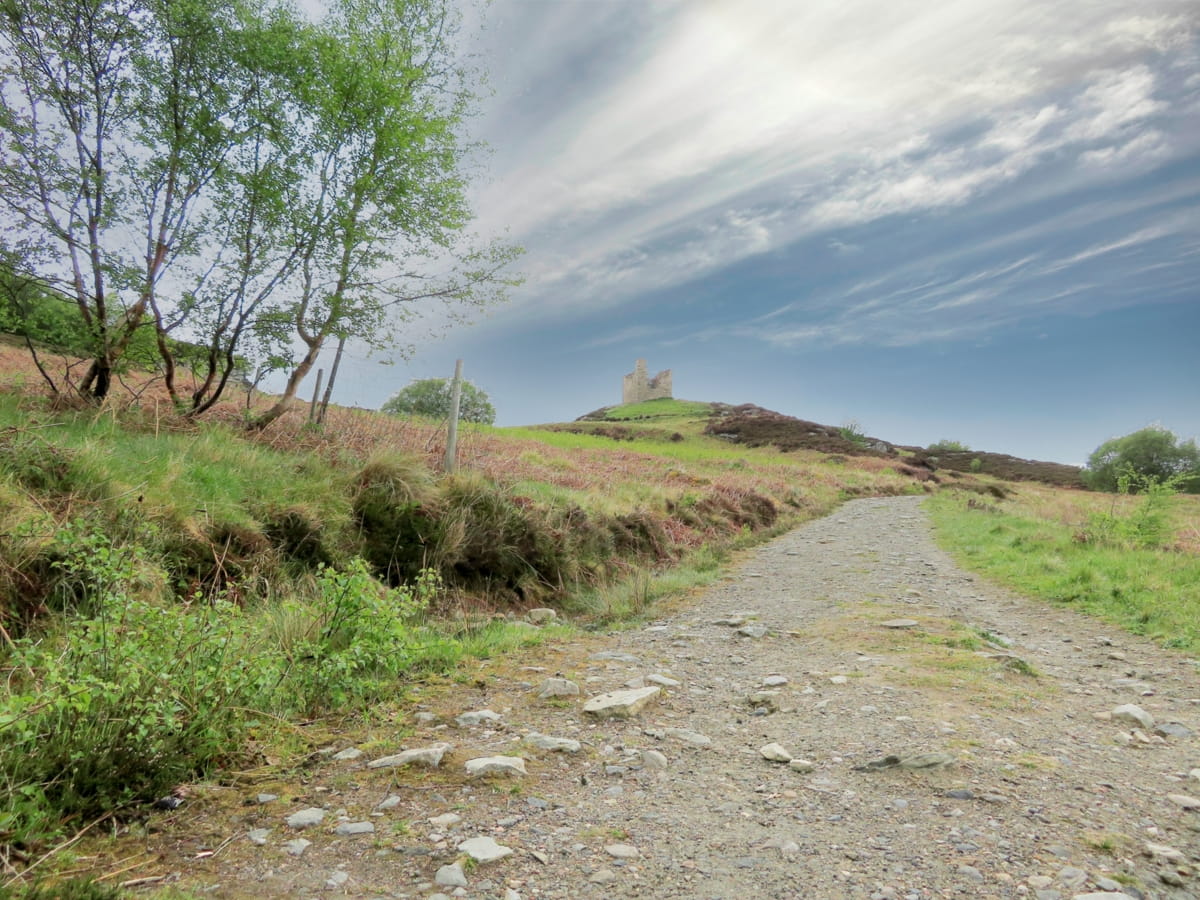
Walking Route
The walk starts in the small village of Tongue near the Kyle of Tongue sea loch, with the village offering a small shop, car parking, and a couple of decent cafes and hotels (the Ben Loyal Hotel has great views across the loch from the lounge at the back).
Start the walk by following the sign pointing to Castle Varrich near the old RBS building, and then follow it down through a grassy track till you get to a gate. You’ll then find a wooden footbridge that crosses the Rhian Burn.
Cross the footbridge and follow the winding track to the castle. It’s a wide path that’s semi-gravelled in places, so it shouldn’t get too muddy in winter, and as it doesn’t deviate in any direction other than the castle, it’s pretty much impossible to get lost. The path runs through a small wooded section just before you ascend the hill, and along the way you’ll find a seat to give your legs a rest if needed.
When you get to Castle Varrich, you’ll find a steel staircase inside that goes up to the lookout tower at the top, where a platform has been installed to view the stunning landscape of the Kyle of Tongue and the dramatic peaks of Ben Loyal.
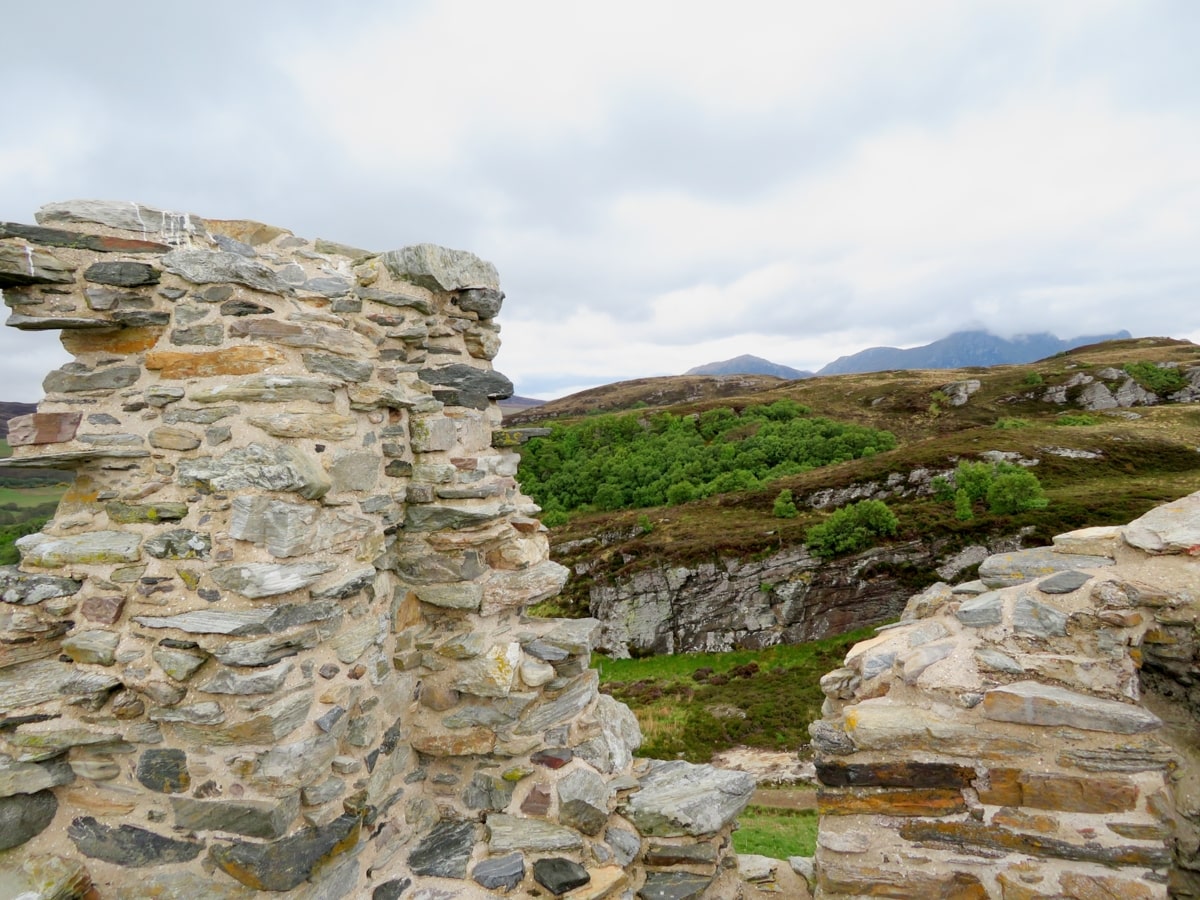
Things to Do
Historical Exploration: Castle Varrich has a history that some believe dates back over 1,000 years. You can spend time examining the castle’s structure and imagining the lives of people who once lived in it. The castle offers a unique window into Scotland’s past, making it a must-visit for history enthusiasts.
Photography: The castle is perched on a hill overlooking the Kyle of Tongue, which presents lovely panoramic views from the battlements. Capture the surrounding mountains and the changing waters of the estuary during the magical golden hour for a photo you’ll be proud to share online.
Nature walks: There are many lovely nature trails that lead to Castle Varrich from the nearby village of Tongue. Take a leisurely walk along these paths and spot local wildlife. It’s a great way to relax and unwind.
Picnicking: There’s nothing quite like having a picnic on Castle Varrich’s hill and gazing down at the Kyle of Tongue. Make sure you pack binoculars to watch seabirds while you’re up there.
Stargazing: The remote location of Castle Varrich makes it an excellent place for stargazing. On a clear night, you can lie back and marvel at the star-studded sky, and maybe (if you’re lucky) even see the Northern Lights.
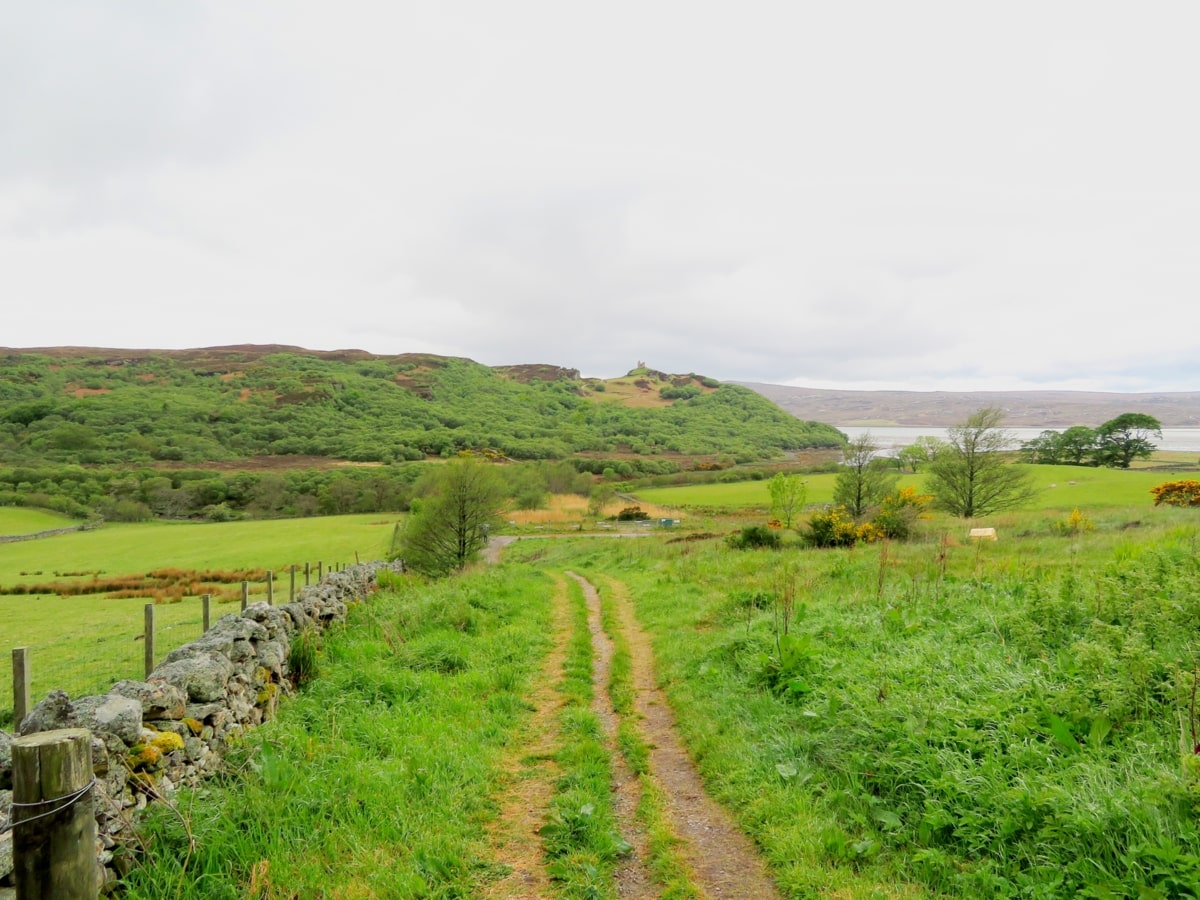
Things to Do Nearby
Smoo Cave. Lairg, IV27 4QA, 50-minute drive.
One of the largest sea caves in Scotland. A guided tour allows visitors to travel deep inside the cave and view an underground waterfall via a dinghy boat ride.
Kyle of Tongue. 1-minute walk.
An expansive yet shallow sea loch that features a rocky coastline designated as a National Scenic Area. Visitors flock to the area for the views of Ben Hope and Ben Loyal.
Strathnaver Museum. Clachan, Bettyhill, KW14 7SS, 28-minute drive.
A small yet fascinating independently run museum that explores the history and heritage of north Scotland and the effects the Highland clearances had on the local population. Located close to Torrisdale Bay and its wide, golden-sand beach,.
Ard Neakie Lime Kilns, Lairg IV27 4UJ, 21-minute drive.
A historic landmark on a spit of land that juts out into Loch Eriboll. Low cliffs surround the mostly shingle shoreline. Superb walks are possible away from the shore.
Borgie Forest Walk. Thurso, KW14 7TH. 17-minute drive.
A scenic forest walk that takes visitors through moorland, alongside hills, and close to several lochans. Generally flat and open, the area is well-known among wildlife spotters for the number of red deer and buzzards that live there.
Frequently Asked Questions
How old is Castle Varrich?
Castle Varrich, located in Tongue in the North Highlands of Scotland, is believed to be around 1,000 years old. However, the exact age is not known, as the castle has undergone various stages of construction and renovation throughout the centuries.
Did the Mackay clan fight at Culloden?
The Mackays fought at Culloden in various regiments on both the government and Jacobite sides. 27 Mackay’s are recorded as fighting for the Jacobites.
Did the Mackay clan have a castle?
Clan Mackay used the ancient site of Castle Varrich in Sutherland as their power base. Though the remains of the castle are little more than a tower today, at one time it had two floors, an attic, and underground caves that are believed to have been used by the Mackay’s.
What castles does Clan Mackay own?
Clan Mackay owned several castles in Scotland, with the most notable ones being:
Castle Varrich: Located in the village of Tongue, Castle Varrich is an ancient seat of Clan Mackay.
Borve Castle: Located on the west coast of the Isle of Harris, Borve Castle was once a stronghold of Clan Mackay.
Tongue House: Although not a traditional castle, this historic building served as the chief’s residence for Clan Mackay for many years.

